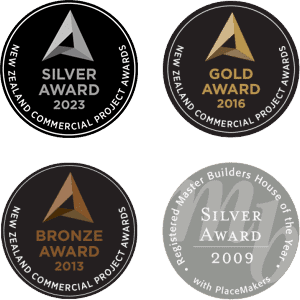Exposing the pitfalls of complex construction contracts
Unveiling the Challenges: The Complexities of the NZS:3910 Contract
As a contractor, I’ve had my fair share of experiences with contracts in the construction industry. One contract that frequently comes up is the 3910, which aims to be fair but often ends up being unfair due to various reasons. In this article, I want to shed some light on the challenges we face as contractors and discuss ways to promote collaboration and mitigate risks in construction projects.
The Burden of Special Conditions: Overshadowing the 3910 Contract
The 3910 contract, in its essence, is relatively straightforward and reasonable. However, the real challenge lies in the numerous special conditions that are attached to it. These conditions can range from a couple of pages to a whopping 200 pages, which often overshadow the original contract itself. Another factor that complicates matters is the role of the engineer to the contract. Whilst this role is supposed to be impartial, it becomes problematic when the engineer is primarily paid by the principal, leading to doubts about their true impartiality.
A Glimpse of Hope: Exploring the New 3910 Review
Fortunately, there is hope for positive changes with the new 3910 review that has recently come out. Although I haven’t had the chance to review it thoroughly, I believe it might address some of the existing issues. However, regardless of contract revisions, the adversarial nature of contracts seems to persist. It appears that the spirit of collaboration, where all parties genuinely strive to deliver a successful project, has been overshadowed by a focus on contractual obligations and conditions.
Passing the Buck: Overcoming the Downstream Risk Transfer
One of the key problems I’ve identified in this regard is the lack of collaboration fostered by the contract itself. Instead, it often promotes a practice of passing risks downstream. Main contractors frequently transfer risks to subcontractors, and this process continues all the way down the procurement chain. As the saying goes, “the buck stops here,” and this dynamic is far from ideal.
Embracing Digital Innovation: Revolutionising the Construction Landscape
Additionally, the contract fails to promote digital innovation, which is crucial in today‘s technologically advanced world. To address these issues, we need to rethink our approach and actively work towards fostering collaboration and embracing digital advancements.
The Power of Face-to-Face: Reviving Collaboration through Personal Connections
Let me share an anecdote from a recent site meeting to illustrate the importance of collaboration. Before starting a project, we typically engage in contract discussions, but I realised that the project would commence with Requests for Information (RFIs). RFIs involve sending questions and receiving faceless answers, which can hinder the establishment of personal connections. In our personal projects, we make it a point to have pre-start meetings where we invite subcontractors to introduce themselves. This simple act of shaking hands, having a cup of coffee, and engaging in general discussions about project outcomes can go a long way in establishing rapport. When you meet someone face-to-face, you can better understand their role and find it easier to communicate with them when issues arise.
Emphasising Early Collaboration: Strengthening Partnerships for Success
The prevailing culture of relying heavily on email as a communication tool has contributed to the decline of face-to-face meetings. Whilst having a paper trail is important, we should not underestimate the power of personal connections. In many cultures, such as the Maori and Pacific ways of dealing with things, face-to-face communication holds great significance. A short 15-20 minute meeting can help bridge the gap and set the foundation for a collaborative working relationship.
Architects and Consultants: Encouraging Inclusive Pre-Construction Meetings
When it comes to our projects, we always conduct pre-construction meetings, involving subcontractors and engaging in open discussions. However, there is room for improvement by including architects and consultants in these meetings. Whilst they are often controlled by the client and focused on billable hours, we should emphasize that early collaboration can prevent costly issues down the line.
Paving the Way to a Collaborative Future: Building Efficiency and Innovation
In conclusion, the construction industry needs a paradigm shift towards greater collaboration and risk mitigation. Whilst the 3910 contract aims to be fair, it often falls short due to the influence of special conditions and potential biases in the role of the engineer to the contract. By prioritising face-to-face meetings and establishing personal connections, we can overcome these challenges and foster a collaborative environment. Embracing digital innovation is also crucial to drive efficiency and success in construction projects.
Let us work together to transform the industry and build a future where collaboration and innovation are at the forefront of every construction endeavour.
See our other Construction Videos:
Follow Us
Do you have an extraordinary journey in mind? Let us help you in celebrating the triumphs, learning from the challenges, and embracing the power of collaborative design and construction. Together, let's create a better future.
If you liked this article, please like, follow or subscribe on your favourite platforms.

Award winning
Our unique engineering approach to construction management is built on strong analytical minds that say there’s ‘never a problem, always a solution’.
We have an ethos of building things that work. Added to this an exceptional back office team who offer a streamlined, process driven approach to project delivery. On time with industry leading quality.
Trust Keola
Award winning
Excellent track record
We take care of the details, expertly navigating the intricacies of working with Council for RMA issues, noise, fire rating, inter-tenancies, unit titles, parking, infrastructure etc.
Can-do approach
Sometimes it takes a little Kiwi ingenuity to figure out a cost-effective way of bringing an architect’s vision to life. So if you’re looking for a builder that’ll add value and finesse to your project, call us.
Exceptional experience
Director Sanjesh Lal is a Chartered Civil Engineer and Registered Master Builder. He’s backed by the exceptional and experienced Keola team to expertly manage your construction project.
Difficult site? No problem
Constructing a building with difficult site constraints? Rest easy. We take pride in our engineering approach to construction management on challenging sites.
Low Variations
Our approach and deep understanding of the process means we price very accurately and pride ourselves on low variations. That means you can trust the figures we put forward.
0
rooms built0
happy families0
sqm of floor space created
